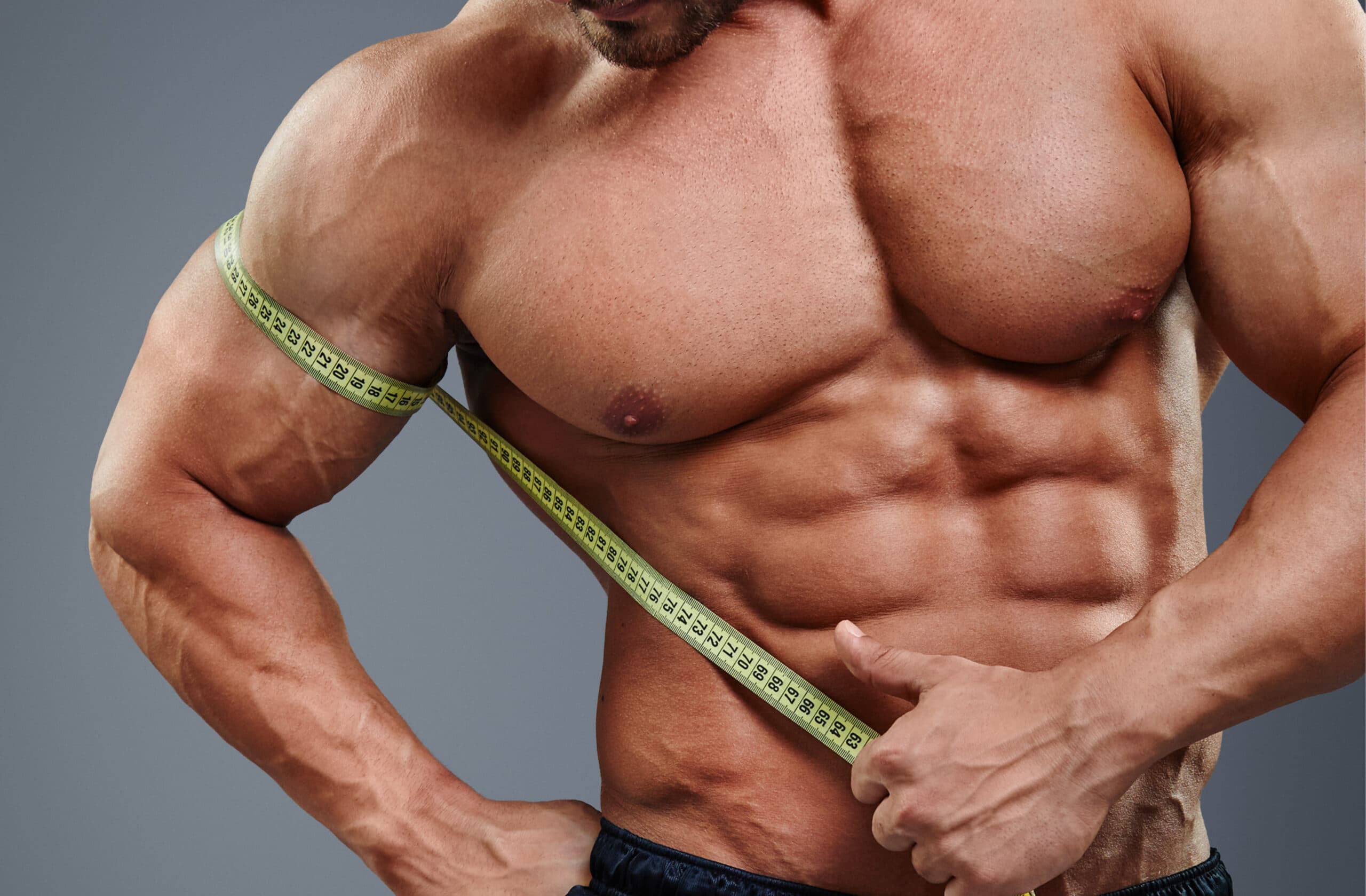Congratulations on reaching an intermediate bodybuilding! You have already achieved some significant gains and are now ready to take your workout regimen to the next level.
In this blog, we will discuss what it means to be an intermediate bodybuilder, how it differs from beginner and advanced levels, and why it’s important to follow an intermediate training strategy.
So, let’s dive in and learn how you can take your bodybuilding game up a notch!
Understanding the Concept of Intermediate Bodybuilding
As you progress in your bodybuilding journey, you’ll eventually reach the intermediate stage. This means that you’ve already built a solid foundation of strength and muscle mass through consistent training and proper nutrition. But what does intermediate bodybuilding actually entail? To put it simply, it’s all about taking your training to the next level by incorporating advanced techniques such as supersets, drop sets, and rest-pause sets.
However, it’s important to note that progressing beyond the beginner stage requires more than just adding more weight or reps to your lifts. You’ll need to focus on progressive overload and periodize your training to ensure continued progress over time. Prioritizing recovery and nutrition is also crucial at this stage, as you’ll be pushing your body harder than ever before. By understanding the concept of intermediate bodybuilding, you can develop a comprehensive strategy for taking your physique to the next level.
What Makes You an Intermediate Bodybuilder?
Just like any other physical endeavor, bodybuilding requires time and dedication. As an intermediate bodybuilder, you have already achieved a solid foundation of muscle mass and strength. You can perform exercises with proper form and have developed a good mind-muscle connection. You are now ready to take things up a notch by incorporating advanced training techniques such as supersets, drop sets, and rest-pause sets into your routine.
To continue making gains, you need to focus on progressive overload by using heavier weights or more reps. Intermediate bodybuilders should also pay attention to recovery, including rest days and proper nutrition. Remember that being an intermediate bodybuilder is not just about lifting heavy weights; it’s about prioritizing your overall health so you can continue to build muscle mass while avoiding injuries.
Differences Between a Beginner and an Intermediate Bodybuilder
As you transition from a beginner to an intermediate bodybuilder, there are distinct differences in your training goals and methods. While beginners focus on building strength and learning proper form, intermediate lifters prioritize increasing muscle mass and definition. This requires a shift towards incorporating more advanced techniques, such as supersets or drop sets, and varying workouts with progressive overload to continue making gains.
Moreover, nutrition becomes even more critical for intermediate bodybuilders. As you increase the volume and intensity of your workouts, you need to fuel your body with adequate protein and carbs to support muscle growth and recovery. The key is consistency and patience – progress may be slower than at the beginner stage, but by focusing on these differences between a beginner and an intermediate bodybuilder, you can achieve long-term results.

Developing an Effective Intermediate Bodybuilding Program
When it comes to developing an effective intermediate bodybuilding program, there are several key factors to consider.
- First and foremost, focusing on progressive overload is crucial for continued muscle growth and development. This means gradually increasing the weight or resistance used during exercises over time to challenge your muscles and stimulate new growth.
- Another important aspect of an effective intermediate program is incorporating compound exercises that target multiple muscle groups at once. These exercises not only save time in the gym but also promote functional strength and overall muscle balance.
- Additionally, implementing advanced training techniques such as drop sets and supersets can help take your workouts to the next level and keep your muscles guessing.
- Of course, nutrition also plays a critical role in supporting increased training intensity and volume. This may involve adjusting your macronutrient ratios or increasing your overall caloric intake as needed.
- Finally, allowing for sufficient rest and recovery time is essential for preventing overtraining and injury.
By taking these factors into consideration, you can develop an effective intermediate bodybuilding program that helps you achieve your goals while minimizing the risk of setbacks or burnout.
Designing Your Workout Routine for the First Three Months
#Chest, Back, Leg, and Shoulder Days: The Breakdown
When designing an effective intermediate bodybuilding program, it’s essential to include specific training days for different muscle groups. This approach helps to ensure that each muscle group receives the attention and stimulation it needs for growth and development.
- Chest day should focus on exercises such as bench press, incline press, and flyes, while back day should target muscles with pull-ups, rows, and lat pulldowns.
- Leg day should focus on squats, lunges, and leg curls, while shoulder day should include overhead press, lateral raises, and front raises.
- Varying the exercises and reps is crucial to prevent plateauing and continuously challenging the muscles.
By incorporating these specific training days into your routine, you can target all major muscle groups effectively for maximum results.
How to Modify Your Routine for the Next Three to Five Months?
Modifying your routine for the next three to five months for intermediate bodybuilding involves making strategic changes to your training, nutrition, and recovery protocols. Here’s a comprehensive guide to help you with your modifications:
- Set Clear Goals: Determine what you want to achieve in the next three to five months. Whether it’s gaining muscle mass, improving strength, or reducing body fat, having specific goals will help you tailor your routine accordingly.
- Adjust Training Frequency: Increase the number of training sessions per week to maximize your progress. Aim for a minimum of four to five workouts per week, targeting different muscle groups on different days.
- Modify Training Split: Consider altering your training split to provide adequate stimulus to each muscle group. Common splits include training specific muscle groups on different days (e.g., chest and triceps, back and biceps, legs, shoulders) or using a push-pull-legs split. Experiment with different splits and find the one that works best for you.
- Progressive Overload: Continually challenge your muscles by gradually increasing the weight, reps, or intensity of your exercises. Focus on progressive overload to stimulate muscle growth and strength gains. Keep a log of your workouts to track your progress.
- Vary Exercise Selection: Introduce new exercises or variations to keep your workouts engaging and target your muscles from different angles. Incorporate compound movements (e.g., bench press, squat, deadlift) and isolation exercises (e.g., bicep curls, tricep extensions) to ensure balanced development.
- Adjust Rep and Set Ranges: Aim for a rep range of 8-12 for hypertrophy (muscle growth) and 4-8 for strength gains. Perform 3-4 sets per exercise, but don’t be afraid to experiment with different rep and set ranges to prevent plateaus and stimulate muscle adaptation.
- Prioritize Compound Movements: Compound exercises involve multiple muscle groups and allow you to lift heavier weights, stimulating overall muscle growth. Prioritize compound movements like squats, deadlifts, bench press, and overhead press in your routine.
- Incorporate Progressive Training Techniques: Implement advanced training techniques such as drop sets, supersets, rest-pause sets, or tempo variations to challenge your muscles further and break through plateaus.
- Optimize Nutrition: Ensure your diet supports your bodybuilding goals. Consume a sufficient amount of protein to aid muscle repair and growth. Aim for around 0.7-1 gram of protein per pound of bodyweight. Eat a balanced diet consisting of lean proteins, complex carbohydrates, healthy fats, and plenty of fruits and vegetables.
- Track Caloric Intake: Determine your daily calorie requirements based on your goals (maintenance, muscle gain, or fat loss) and track your caloric intake using a food diary or calorie-tracking app. Adjust your calories as necessary to support your goals.
- Prioritize Recovery: Adequate rest and recovery are crucial for muscle growth and preventing injuries. Ensure you’re getting enough sleep (7-9 hours per night) and incorporate rest days into your routine. Consider including active recovery activities like stretching, yoga, or light cardio on rest days to promote blood flow and aid recovery.
- Monitor Progress: Regularly assess your progress by taking measurements, tracking bodyweight, body fat percentage, and strength gains. Adjust your routine based on your progress and make necessary modifications to keep challenging your body.
Remember, it’s important to consult with a qualified fitness professional or coach who can provide personalized guidance based on your specific needs and goals.

Rest Periods and Form Correction
Proper rest periods and form correction are crucial aspects of any bodybuilding routine, especially for intermediate level athletes. Rest periods are essential for muscle recovery and growth, allowing the body to repair and build stronger muscle tissue. With a properly designed program, rest periods can be tailored to your fitness level and goals, ensuring maximum gains from each workout.
Form correction is equally important for preventing injury and optimizing muscle activation during exercises. Poor form can lead to strain on joints and muscles, reducing the effectiveness of an exercise and increasing the likelihood of injury. By focusing on proper technique and making adjustments where necessary, you can ensure that you get the most out of each exercise while minimizing the risk of injury. With these two factors in mind, it’s important to prioritize both rest periods and form correction in your intermediate bodybuilding training program for optimal results.
Maximizing Your Results with Proper Nutrition and Supplementation
Proper nutrition and supplementation play a vital role in maximizing your results as an intermediate bodybuilder. Consuming enough protein and carbohydrates fuels your workouts, promotes muscle recovery, and aids in building lean muscle mass. Adequate hydration is also crucial for overall health and optimal athletic performance. Additionally, supplements such as protein powder, creatine, and pre-workout can enhance exercise performance and support muscle growth.
Working with a nutritionist or personal trainer to develop a personalized plan can help you meet your specific fitness goals. They can assess your current dietary habits, make recommendations for improvements, and provide guidance on supplement usage. Keep in mind that timing is critical when it comes to meal consumption and supplement intake – eating before and after your workout helps supply the energy needed to power through your training sessions and repair muscle tissue post-workout. By prioritizing proper nutrition and supplementation, you can take your bodybuilding to the next level while achieving maximum results.
Let’s Sum Up
Intermediate bodybuilding is all about challenging yourself to take your fitness goals to the next level. It’s important to understand what makes you an intermediate bodybuilder and follow a training strategy that suits your needs. Remember, proper nutrition and supplementations are just as important as your workout routine when it comes to maximizing results.



